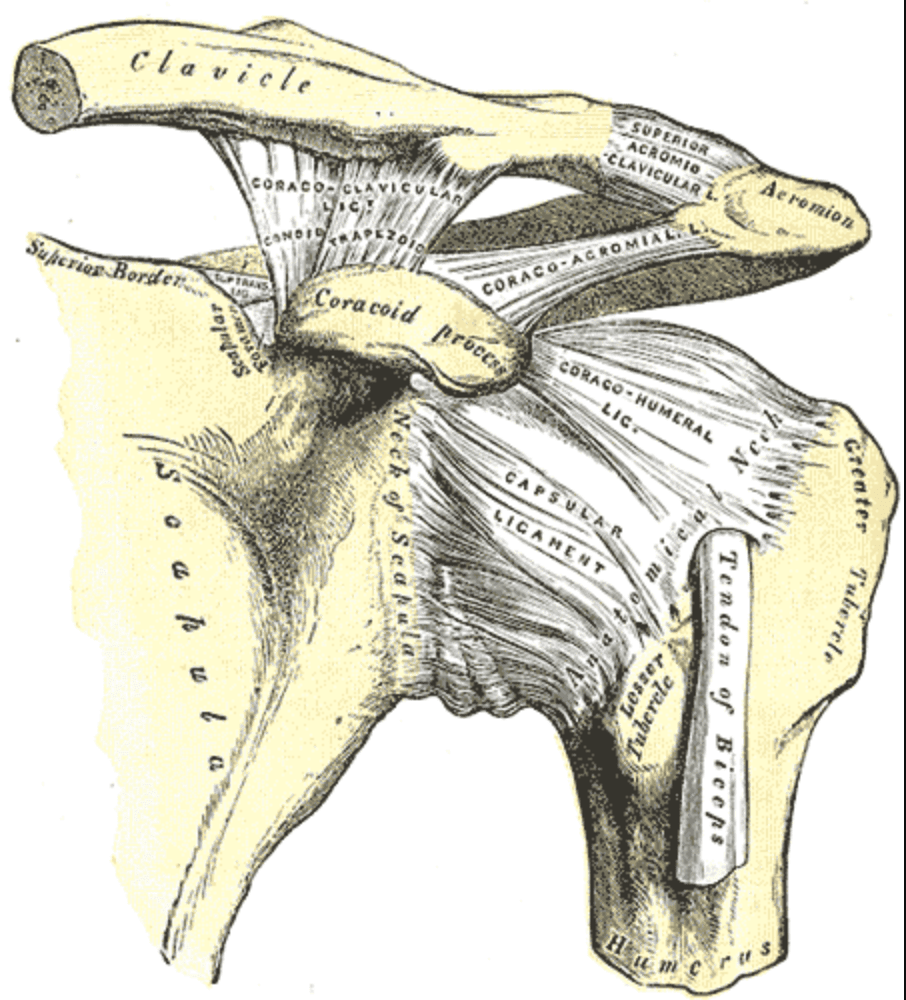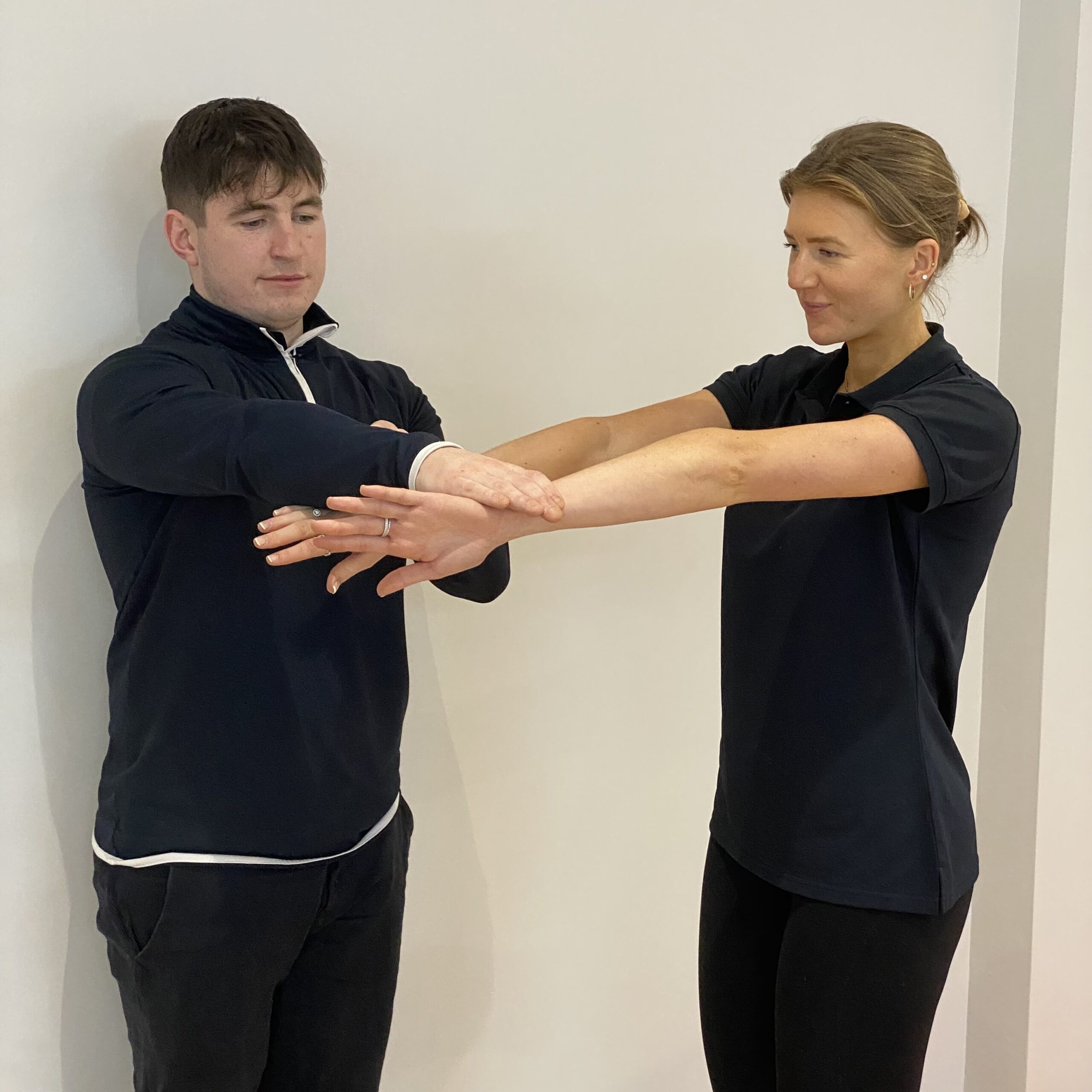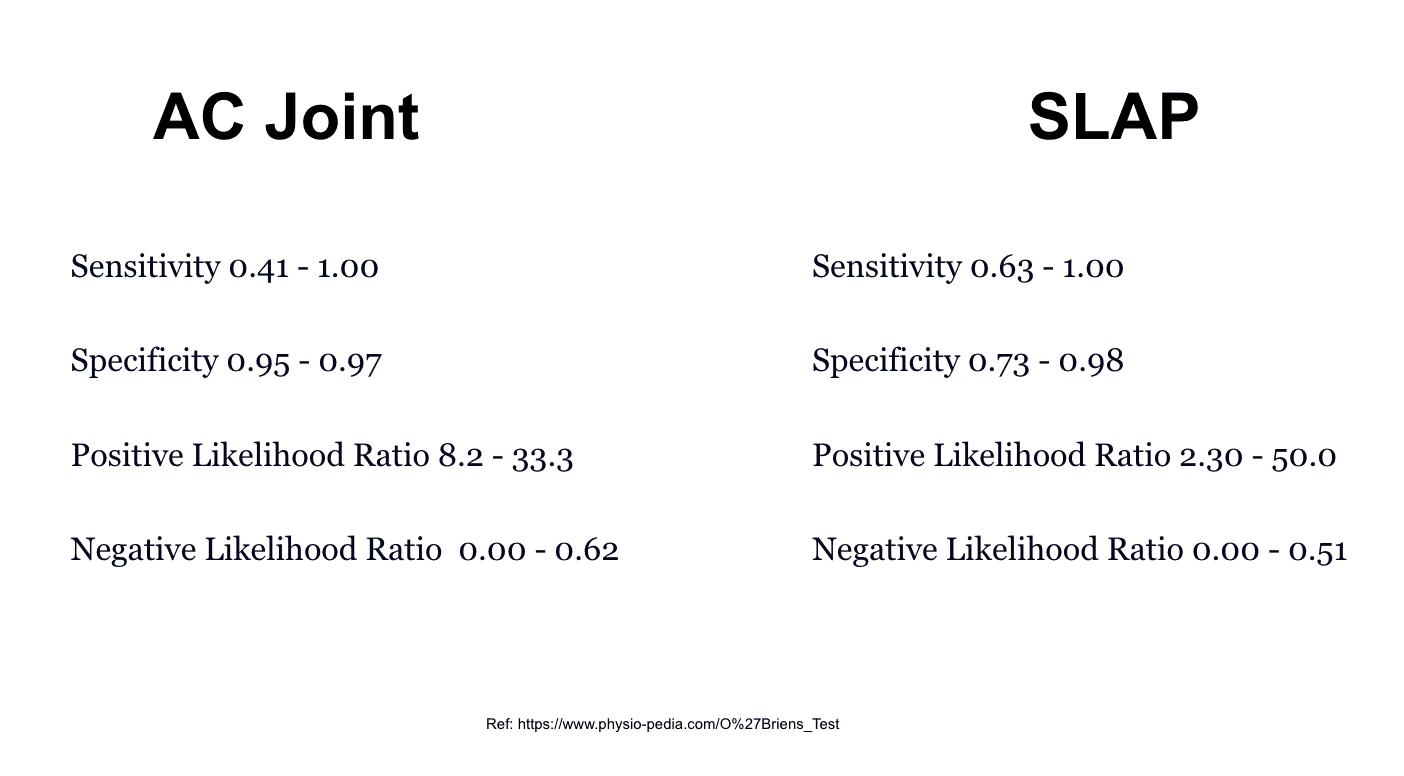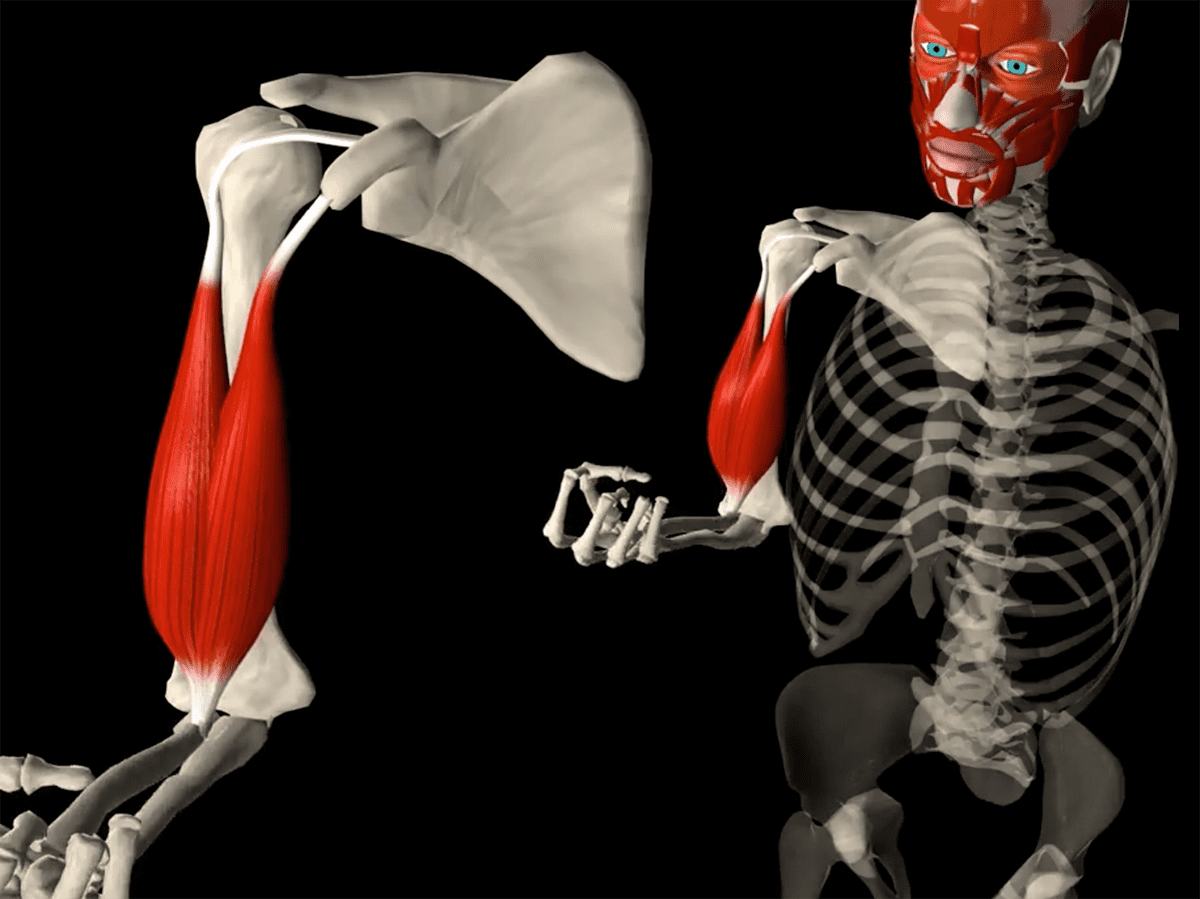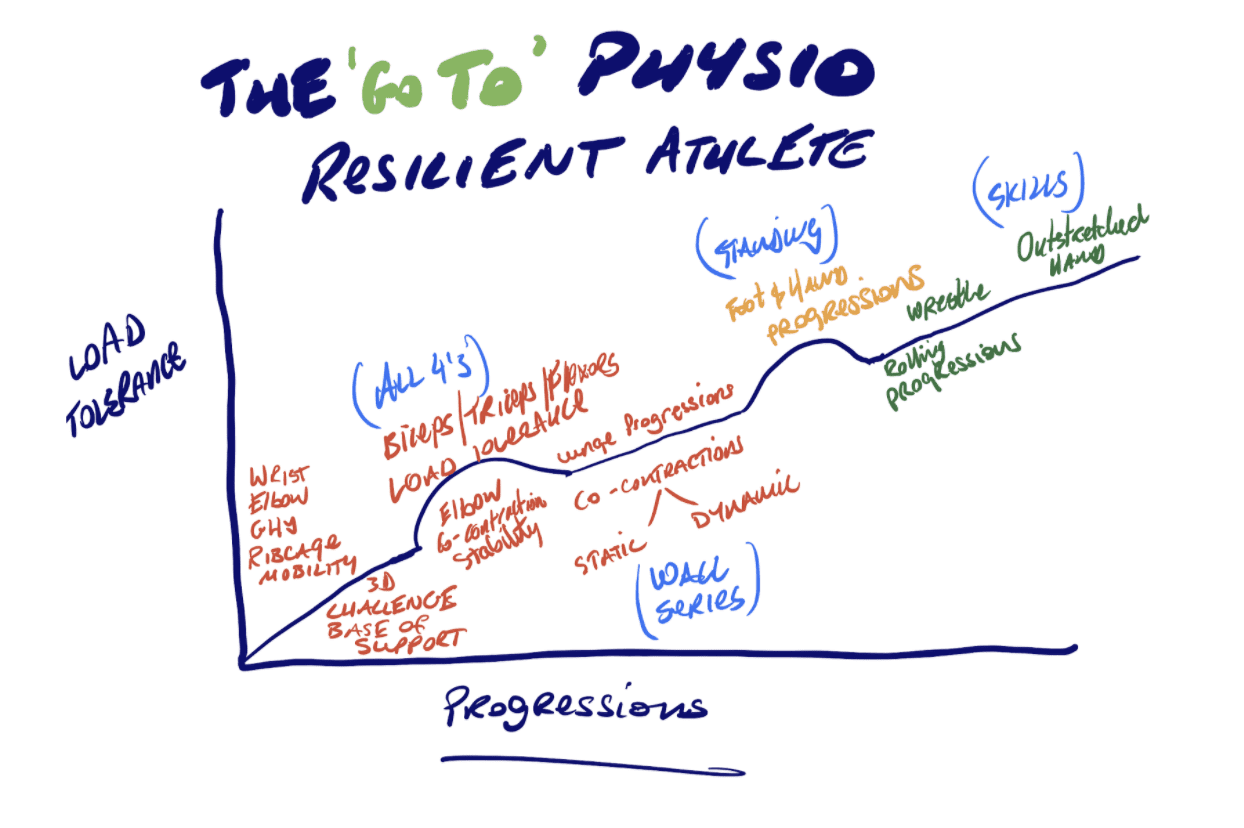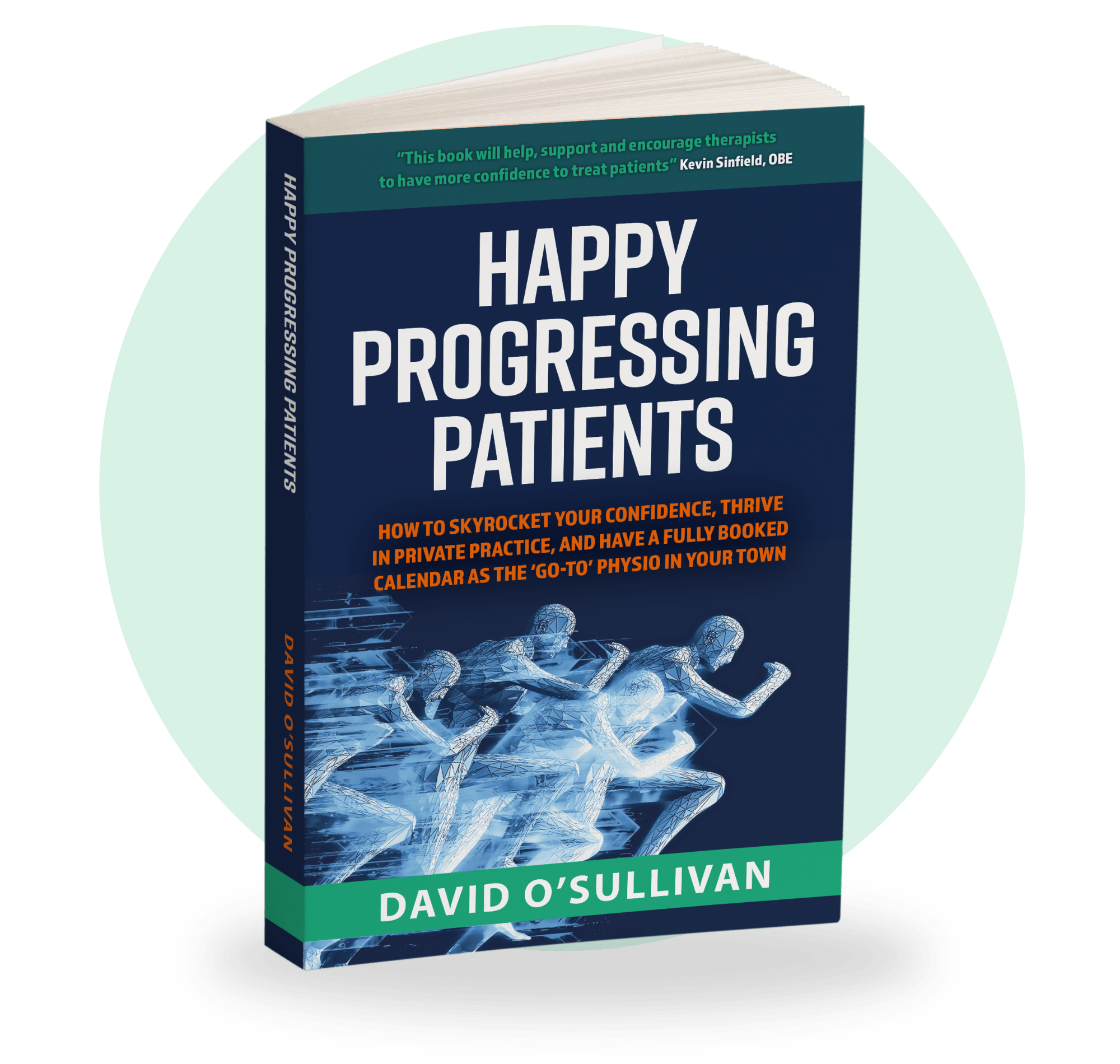
Your shoulder pain cases can be some of the trickiest. There are so many tests and variables that it can be hard to be truly confident with your treatment. But the success of your clinic relies on you being confident enough to make sense of these tests and achieve real results.
Throughout my career, I have seen hundreds of these complex shoulder patients and used countless tests to decode symptoms. But one test I always see therapists use is the O’Brien test.
In this article, we’ll discuss the research, how to use O’Brien’s test, but more importantly how to make sense of it.
I’ll show you exactly how I begin treating a positive O’Brien’s test and how I begin to bridge the gap between lower and higher-level rehab.
Read on to find out how to make sense of O’Brien’s test and how to ease your patient’s symptoms quickly.
How To Perform O’Brien’s Active Compression test
The O’Brien test is designed to detect labral injuries, labral tears, or potential slap lesions that could potentially be the cause of pain for your patient.
To perform this test your patient must flex their arm to 90 degrees with the elbow fully extended, then horizontally adduct the arm 10-15 degrees.
In this test position, the arm is then maximally internally rotated and the patient resists the downward force created by the examiner.
When the arm is internally rotated your patient must resist the downward force rather than the examiner resisting forward flexion. Do not let the patient push up to you. Simply ask them to hold their body as you push down.
You want to get the deceleration force of the biceps to stress the glenoid labrum rather than getting them to concentrically contract.
If this test reproduces symptoms in the acromioclavicular joint or deep within the shoulder, retest again with the arm supinated, if this is negative then this would be a positive test and you may then be suspicious of a superior labral tear from anterior to posterior (SLAP tear).
Making Sense Of The O’Brien’s Test
The real issue with any test comes when making sense of your findings. You must draw the information from this examination and use this to establish your treatment options.
Owen et al noted in their 2015 int j shoulder surg article that ‘multiple tests have been described for posterior labral pathology and none of these, on their own, have a high sensitivity rate.’. Parentis et al also noted in their American Journal Of Sports Medicine article that “there is no single maneuver that can accurately diagnose superior labral anterior posterior lesions”.
Done in isolation the O’Brien’s test will never be 100% accurate at identifying SLAP or superior labral tears. You can see the success ratio, provided by physio-pedia, in the table below. The O’Brein’s must be combined with any other SLAP test, such as the Clunk test or the supine flexion resistance test described by Nina et al in their 2008 study. This is the only way you can gather evidence and be more confident of the extent of the cause of the shoulder injury.
Throughout my 13 years in professional sport, I have sent athletes for magnetic resonance imaging scanning (MRI) which has shown damage or a slap tear only to present a negative test in the clinic and vice versa. Just because you have a positive test, MRI, or pain experience does not mean you have no hope of intervening or your patient needs immediate surgery.
How To Quickly Influence A Positive O’Brien’s Test
A positive O’Briens’ test can be overwhelming for any therapist. With all complex shoulder injuries, it can be hard to know where to start. In this case, there are some key tissues on which you can focus to immediately improve your patient’s condition.
As Surgeon Lennard Funk found, ‘Arthroscopy revealed that the test position (90° forward flexion, 10-15° adduction and maximum internal rotation) displaces the biceps tendon medially and inferiorly therefore putting tension on the bicipitallabral complex.‘ From this we can understand that the bicep plays a large role in O’Brien’s test.
Take the example of using a gear stick, with this movement there will be forearm pronation and you’re going to want to lengthen the biceps in the transverse plane even if it is shortened in the saggital plane.
When we internally rotate the arm we need the biceps to lengthen. If it can’t lengthen – especially with pronation – then the tissue may pull on the glenoid labrum causing irritation. Very often, if you can help the biceps to lengthen, you’ll influence the labrum and reduce pain very quickly. But that isn’t the only tissue you need to consider.
For the success of the shoulder joint, we need to be able to tolerate load through the biarticular muscles, the key here being the long-headed triceps. Helping the triceps to lengthen will allow the joint to go through a full range of motion without compensations.
If we take these simple steps very often we can achieve a significant easing of the pain experience and a negative test.
Below are a few powerful exercises that you can implement in your own clinic today in order to positively influence a positive O’Brien’s test, SLAP lesion, and SLAP tear.
What Is The End Goal?
Before you begin to consider exercises or hands-on treatment you must understand what the real goal is. The goal isn’t just to get a negative test, you must be able to get every tissue doing its job efficiently and set your patient up for success in the real world.
In the ‘Go-To’ Physio Mentorship, I teach one simple rule of thumb for doing just this. Using the 80/20 rule, we respect the joint pathology or the symptoms but we spend 80% of your time getting everything doing its job. So let’s get the 80% doing its job with these exercises below…
Biceps Exercises To Influence a Positive O’Brein’s Test
Upper Limb Weight Shift
Transverse Plane Pertubations Biceps
Posterior Lateral Direction Triceps Loading
Triceps Exercises To Influence a Positive O’Brien’s test
Tricep Lengthen With Dowl
Triceps Loading Wrist Taps Sagittal Plane
Posterior Direction Triceps Loading Wrist
Your Graded Exposure Treatment Programme
Just because someone is pain-free in the clinic does not mean they’re ready to go back to the real world. You must bridge the gap between lower and higher-level rehab.
Ultimately, the exercises above are only the very beginning. They will take you from A to B but ultimately you need to get to F. This is where your graded exposure plan comes in, using the next logical step to build your patient’s resilience.
I see so many therapists using top-down cues with their patients but this is only half of the battle. You need to get it so all of the muscles, rotator cuff, traps, are all working outside of higher centre control. This is the only way you can really build patient confidence because and as Louis Gifford says, give them ‘thoughtless, fearless movement.’
But this is a process. It does not happen overnight. As a therapist, you need to be able to master every pillar of the go-to therapist pillar system. To truly bridge the gap between lower and higher-level rehab you must have all of the foundational skills from the subjective examination, objective assessment all the way through to strength and conditioning.
With this comes consistent results, and with that comes consistently happy patients, reviews, referrals, and a reputation as the go-to therapist.
Successful Patients Build Successful Clinics
You can do all of the lower level exercises you want but the only way to set your patient and your clinic up for success is using a step-by-step graded exposure treatment plan and helping your patient to bridge the gap between lower and higher-level rehab.
If you want more help with this, click the link below, book a strategy call and we will tell you exactly how we bridge the gap with every patient that walks through the clinic door.
Get Your FREE Copy Of The Amazon #1 Bestseller That Holds The Secret To Confidently Treating Any Patient!
Download a Free ‘ebook’ copy of the 8-Step ‘World Cup’ Treatment Plan that helped my private patients achieve full recovery and made me a ‘go-to’ physio for complex cases…
